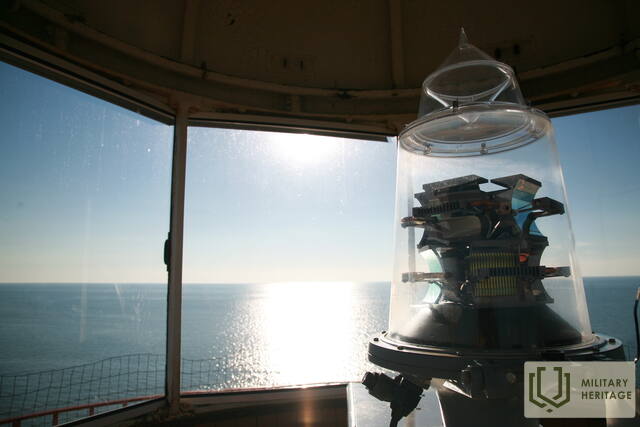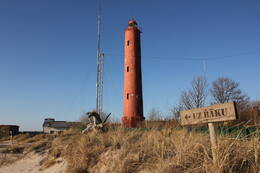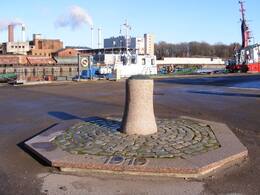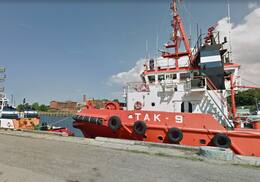Cape and ship Saratov
It can be assumed that Liepaja was the capital of Latvia for a short period of time, because during the Freedom Struggle the Provisional Government was stationed on the ship Saratov in this very city. The Saratov took the Provisional Government to Riga after its liberation, but many people do not know that the history of such an important ship for us ended at sea at Akmenrags.
The most well-known ship, which ran here on the rocky shoal of Cape Verde and remained here forever, is the steamer Saratov. This ship is historically significant for our country in that during the Freedom Fights the Latvian Provisional Government was on board with Kārlis Ulmanis at the helm, and it was this ship that took the Provisional Government to the liberated Riga.
Saratov was built in Denmark in 1888 and went to sea for the first time under the name Leopold II. In 1911, the ship was bought by the Russian Northwest Shipping Company and renamed Saratov. Liepāja becomes the port of registration of the ship, from where the ship makes regular voyages to Great Britain. During the First World War, the ship changed its ownership several times, until Latvia returned it after the signing of the Peace Treaty in the USSR. On its last voyage, the ship went to Great Britain, but on the way it had to return to Liepaja to release Latvian sailors. The ship was already piloted by the crew and captain of the Soviet Union, Latvian sailors were only its passengers.
On January 14, 1923, the fishermen of Pāvilosta saw a steamer from the shore, which was going in the direction of Liepāja, but was going too close to the shore. Fishermen still intend that if they do so, the vessel will remain on Akmeņrags shore… Latvian sailors on board warn the coxswain about the danger, because Akmeņrags lighthouse is already clearly visible and the sea is calm at that time. The helmsman refuses to change course without the captain's knowledge, but the captain has lunch at that time. When it finally arrives at the wheelhouse, the hull of the ship is already hitting the shore stones and it is too late to rescue… Rescue tugs arrive from Liepaja, but a storm and a snowstorm begin, they fail to take the ship off the shore. On the second morning, the Akmeņrags lifeboat, despite the storm, manages to rescue those on board twice by going to sea. Waves and storms clear the ship, but the damage to the hull is too great and the ship sinks there. Back in 1933, the ship's chimney and mast were above the water, later the ship was partially blown up and metal from it came to the Liepāja wire factory. However, Akmeņrags has also got its part from this ship, part of its wreck is still on the seabed. It is said that the helmsman of the ship, after returning to the USSR, was tried and sentenced to death for this fatal navigation error. There is no information about the ship's captain's future career.
During the time of the USSR, a part of the Soviet army border guards was built and installed at the Akmeņrags lighthouse.
Jūrnieks magazine
Related timeline
Related topics
Related objects
Akmeņrags Lighthouse and the fate of the "Saratov"
The Akmeņrags Lighthouse is located in Saka parish, 10 kilometres southwest of Pāvilosta. The top of the lighthouse can be reached by a spiral staircase and it offers views of the sea and the surrounding forests. Standing at 37 metres high, the current lighthouse tower was built in 1921, while the previous lighthouse was destroyed during World War I.
The Akmeņrags Lighthouse stands out among other lighthouses in Latvia, as it is located in one of the most dangerous places for sailing in the entire Baltic Sea coast. The signal beam of the lighthouse marks a rocky bank, which extends approximately two nautical miles or 3.7 kilometres into the sea in a north-western direction. The depth of the bank is just over two metres. The location of the lighthouse has remained unchanged, but the coastline has been receding over the years. Although a navigation light has been here since 1879, Akmeņrags has seen several shipwrecks. The most notable occurred in September 1923 when a Latvian steamer named Saratow struck the ground. In 1919, Saratow briefly served as the seat of the Latvian Provisional Government. Akmeņrags used to be home to a border guard post, and buildings of the Soviet Army are can be viewed here.
Berth of the ship "Saratov" in Liepaja
The berth of the "Saratov" is located in Liepaja, at 59 Old Harbour, near the boat docks.
Built in 1888 in Copenhagen by the shipyard Buvmeistar & Wain under the name "Leopold II", in 1911 it was bought by the joint-stock company Russian North-West Shipping and renamed "Saratov", with the Latvian Aleksandrs Remess becoming the ship's captain.
In May 1915, when Liepaja was occupied by German troops, the Saratov was in a damaged state in the harbour.
On 10 January 1919, the steamship Saratov was taken over by the Latvian Provisional Government. From April to July 1919, after the "16 April coup d'état", the Provisional Government headed by K. Ulmanis was on board the Saratov and was forced to take refuge under the protection of the Allied fleet.
On 8 July 1919, after the delivery of the Provisional Government of K. Ulmanis to Riga, the steamers were used for traffic between Riga, Ventspils and Liepaja.
Under the terms of the Peace Treaty of 11 August 1920 between Latvia and Soviet Russia, the steamship Saratov had to be returned to the Soviet side. On 2 January 1923, the steamship was handed over to a Soviet Russian representative. On 15 January 1923, the steamship "Saratov" was wrecked off Akmenrags.
In 1936 the Latvian Maritime Department sold the wreck to a company, which scrapped it and handed it over to the Liepaja Cloth Factory.
The real berth of the ship "Saratov".
The real berth of the ship "Saratov" is located in Liepāja, Vecā ostmala 59 near the boat docks, but the memorial is located in the immediate vicinity of the special economic zone of Liepaja.
Built in 1888 in Copenhagen in the shipyard "Buvmeistar & Wain" under the name "Leopold II". 1911. In 2010, it was bought by the joint-stock company Russian North-West Shipping and renamed "Saratov", Latvian Aleksandrs Remes became the ship's captain.
In May 1915, when Liepaja was occupied by German troops, "Saratov" was in the port in a damaged condition.
On January 10, 1919, the steamship "Saratov" was taken over by the Provisional Government of Latvia. From April 1919 to July 1919 on the ship "Saratov" after "16. of the April coup" was the Provisional Government led by K. Ulmanis, which was forced to save itself under the protection of the Allied fleet.
On July 8, 1919, after the Provisional Government of K. Ulmanis was brought to Riga, the steamer was used in traffic between Riga, Ventspils and Liepāja.
According to the terms of the peace treaty of August 11, 1920 between Latvia and Soviet Russia, the steamer "Saratov" had to be returned to the Soviet side. On January 2, 1923, the steamers were handed over to the representative of Soviet Russia. On January 15, 1923, the steamer "Saratov" perished near Akmeņraga.
In 1936, the Maritime Department of Latvia sold the shipwreck to a company, which salvaged it and delivered it for scrap to the Liepāja Shipyard.








